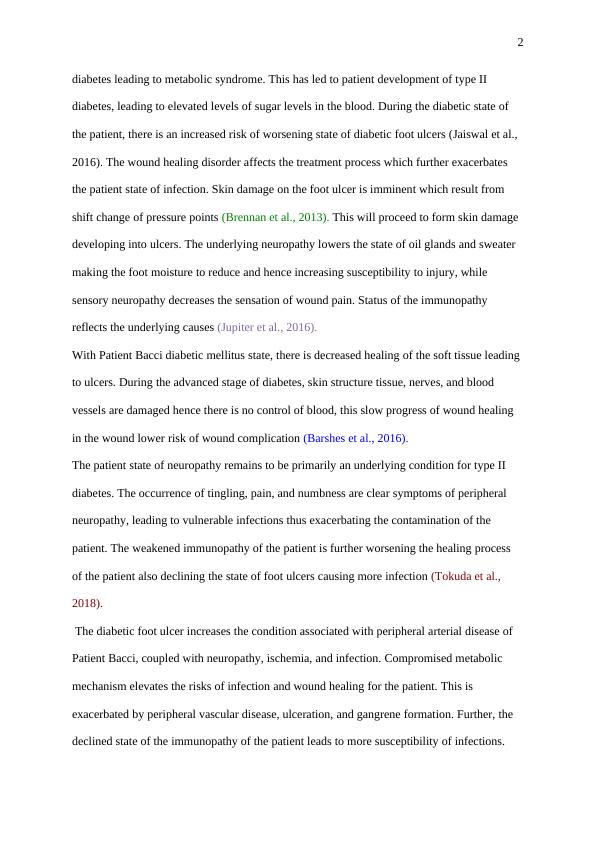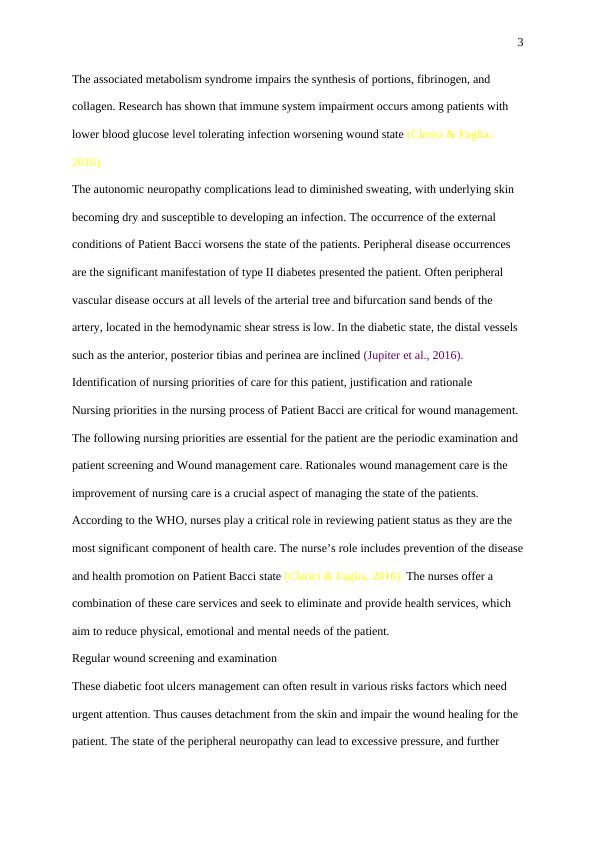Pathophysiological Assessment and Nursing Care Priorities on Case Study Review
Mrs Gina Bacci, a 49-year-old Italian lady with poor English, underwent surgery for partial amputation of forefoot and toes. She has a history of Type II diabetes, Peripheral vascular Disease, and Obesity. She is now presenting for wound assessment and management.
9 Pages2534 Words342 Views
Added on 2023-04-08
About This Document
This article discusses the pathophysiological assessment and nursing care priorities for a patient with a diabetic foot ulcer. It covers the evaluation of the patient's condition, the complications arising from diabetes, and the importance of regular wound screening and examination. The nursing priorities include wound management and proper dressing of the wound. The article emphasizes the role of nurses in preventing and managing diabetic foot ulcers.
Pathophysiological Assessment and Nursing Care Priorities on Case Study Review
Mrs Gina Bacci, a 49-year-old Italian lady with poor English, underwent surgery for partial amputation of forefoot and toes. She has a history of Type II diabetes, Peripheral vascular Disease, and Obesity. She is now presenting for wound assessment and management.
Added on 2023-04-08
ShareRelated Documents
End of preview
Want to access all the pages? Upload your documents or become a member.
Nursing Assignment-Diabetic Case Study
|10
|2911
|36
Type II Diabetes: Pathophysiology, Causes, and Nursing Management
|11
|3177
|113
Principles of Nursing: Surgical
|11
|2904
|102
Diabetes Management Case Study
|10
|3057
|65
Pathophysiology, Nursing Priorities and Management of Diabetic Foot Ulcer: A Case Study
|10
|2726
|139
Diabetes Case Study: Analysis, Pathophysiology, and Nursing Management
|10
|2527
|2



